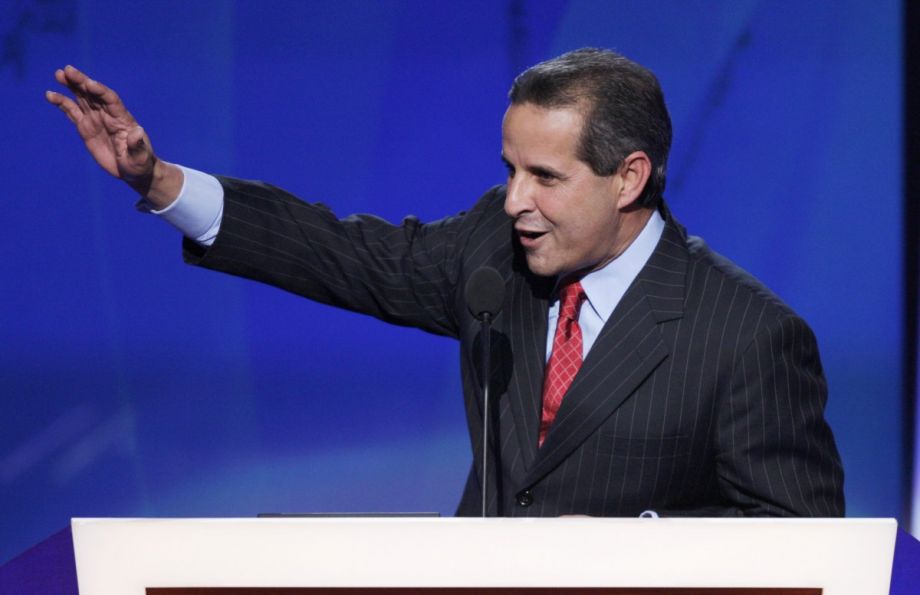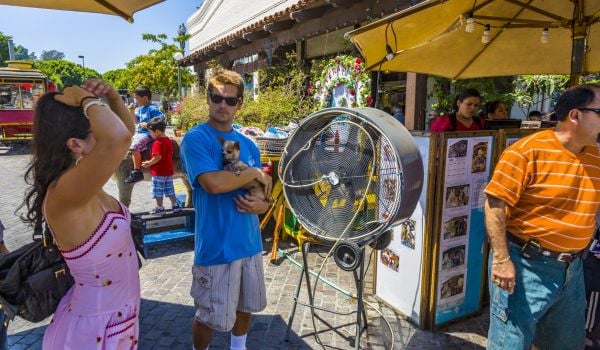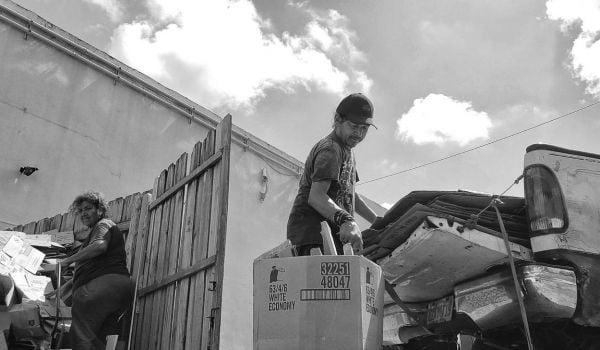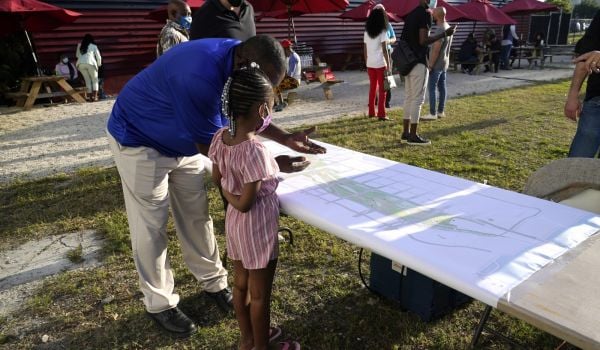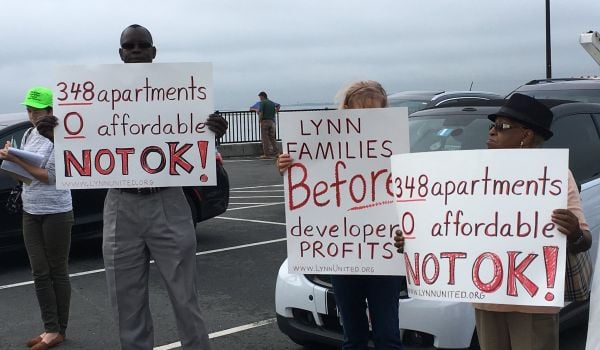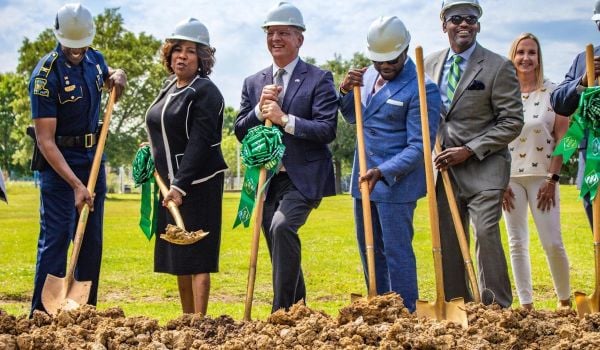The following is an excerpt of a speech by former Miami Mayor Manuel “Manny” Diaz. It was originally delivered at the 2016 Design Matters Conference in Miami.
When I ran, I had no clue what the terms environmental and economic sustainability meant.
During my first state of the city, I talked about creating a citywide master plan, but I had no idea what that meant either.
You see a mayor faces significant challenges daily — eradicating poverty, ensuring the safety of our residents, providing a quality education for our children, creating opportunity for all.
We deal with the suffering of people losing their jobs, their homes, their businesses or a loved one to a drive-by shooting.
City design gets lost in all of that. But it is at the heart of everything we must do in order to make our city livable and sustainable.
City design was not a part of my campaign platform. It certainly was not my first priority on day one.
Yet, the single most critical step for environmental and economic sustainability is embracing smart growth, designing a city that makes sense, a city that works.
I knew we needed to plan our future. The status quo was unacceptable.
Intuitively, I saw much that was wrong with Miami, much that did not make sense/did not seem to work.
I also knew that, if we were going to implement our many other initiatives and tap into Miami’s unrealized potential, a lot of new development and people would follow.
This would require a plan for growth that had to go beyond zoning regulations, the mere swapping of one zoning code for another.
It had to include a holistic approach — how parks, green spaces, transportation, the arts, historic preservation — would all work together to create a sense of place in Miami.
A city is like an orchestra. For an orchestra to make beautiful music, all the instruments must work together off the same sheet of music. And so too does a city.
This idea to create a blueprint for the Miami of the 21st century and beyond became Miami 21.
Miami 21 repeals an archaic zoning code with sustainable zoning and land use policies that promote great urban design.
It is a code that does not focus on what is forbidden, but rather on what is desired.
It is not just a regulatory code, but also both a planning document and a guidance document.
We merged zoning, planning and sustainability, at one time, in one document.
It was the first time a form-based code had been adopted for an entire major U.S. city.
I must confess this is not exactly what I had in mind when I called for a “citywide master plan.”
But this is a classic example of how mayors evolve.
And how the following three “aha moments” helped shape my evolution.
Chief Architect
My first aha moment occurs when I realize that a mayor’s most important job is that of chief architect of his/her city.
I mentioned a few issues earlier — crime, education and economic opportunity/jobs.
Through time, crime, academic performance and job figures will go up and down often for reasons beyond the mayor’s control.
But, our decisions regarding the physical environment are very different. The decisions we make today will determine the character and function of our city for the next 25, 50, 75 years.
Our decisions regarding buildings, bridges, highways and streets, and the public realm can serve to either enhance our city’s future or help condemn it to mediocrity for decades.
Once you realize this is really your one true legacy, you begin to fully appreciate this extraordinary obligation.
You also realize how little knowledge or training you bring to the job to deal with city design.
Environmental Sustainability
Miami had been known for lots of great things: our diversity, culture, food, beaches and nightlife.
We had not been known for being a leader in the environmental movement.
Miami’s history is filled with examples of an almost criminal neglect for our environment: suburban sprawl; using parks as landfills; polluting our rivers; no green buildings; no water conservation plans.
I had always taken great pride in being a strong environmentalist.
We implemented many environmental initiatives — a climate action plan; expedited permitting; green procurement and water conservation; solar panels at City Hall; miles of bike lanes; green fleet; a tree canopy; green buildings, from zero in 2005 to top 10 in the U.S. today.
[There were other influential examples such as] the Kyoto [Protocol] and Inconvenient Truth and the Mayors’ Climate Protection Agreement.
What had started as my strong belief that a city must plan for its future had become an integral part of the fight against climate change.
All of a sudden, you connect city design to a city’s carbon footprint. [There’s a] new sense of urgency because you realize that an aggressive environmental program is not enough.
Embracing smart growth took on a whole new significance.
It was now a much greater effort to promote environmental sustainability.
Mayors evolve as the world changes — 9/11 turned mayors into first responders in the fight against terror; now, mayors become first responders in our struggle against global climate change.
The answer to this global challenge requires a local response.
Miami 21 was our response to global climate change, because design matters.
Economic Sustainability
Through the late 1990s, Miami was still known to many as the capital of drugs and murder, of poverty and riots. We had double digit unemployment, a rate higher than during the great recession. We were under state financial oversight. We had a declining urban population, [and] plenty of suburban sprawl (people voting with their feet).
No major projects were being built.
Our parks and open spaces were neglected.
Our streets filthy, broken and unsafe. Our neighborhoods in decay.
We lacked political stability, and we were a community divided by ethnic and racial tensions.
We were the brunt of national and international jokes.
This was the Miami of just 16 years ago.
How do you turn this around?
You focus on creating a climate of opportunity. Through proper planning and targeted government investments you create the environment where private sector investment and economic opportunity follow.
Another aha moment: City design is also an important economic development tool. Through city design you create the quality of life that attracts and keeps the people and the businesses that enable a city to grow and sustain a globally competitive economy.
During the last decade we invested in the basics: job creation and economic development, education, affordable housing, public safety, the arts, a greener Miami, urban planning and infrastructure.
We became a top 10 job generator. Our schools showed remarkable gains in academic achievement.
We invested over $1 billion in affordable housing and reduced our homeless population by over 50 percent.
Our crime rate dropped to rates not seen since the 1960s and ’70s. Our use of force policy became a national model, resulting in an unprecedented 20 consecutive month period without the discharge of a gun by a police officer.
Our city’s neighborhoods benefited from over $5 billion in infrastructure investments.
From streets and sidewalks, flood mitigation, parks and open spaces and a port tunnel — we rebuilt our city.
We invested in the arts. A region previously criticized for being devoid of art and culture has become one of the world’s art capitals. The opportunity to experience great art did not exist in Miami — but it does now.
Proper planning and strategic investments helped create the Miami of today by ushering in the greatest economic expansion in our city’s history.
Our metro area is now the 11th largest metro economy in the U.S., larger than 32 states, the 47th largest in the world; only six countries in the Western Hemisphere have an economy larger than ours.
In 2001, the tax base for the entire city of Miami was $13 billion. As of last year, the tax base for the urban core alone was over $15 billion, and citywide over $40 billion.
The population in our urban core increased by almost 100 percent and may soon reach 100,000 residents.
One hundred and thirty-five new high-rise buildings were completed — greater than the combined total of high-rise buildings built between 1960 and 2000.
We led the nation in housing growth — number two only behind NYC in new construction activity.
Number two in new business startups.
We are America’s most diverse city: 60 percent of our residents are foreign born.
This was the Miami transformation. From the brunt of jokes to a city others wish to emulate, a laboratory of new ideas and innovation, the face of the new American city.
This transformation was not a coincidence: It happened because of proper planning and strategic investments designed to create a climate of opportunity that encourages private investment and growth.
Why is this important?
Because the world is changing at a pace never before imagined.
For the first time in history over half of the world’s population live in cities — a trend that will continue to bring added pressure and greater challenges to cities.
Because information flattens the world, the role of cities has become more important than ever.
Cities must function as incubators of the knowledge-based businesses driving the new economy.
Cities will have to compete to attract the knowledge workers whose ideas serve to grow these economies.
And in order to attract the best and the brightest, cities must invest in the drivers of growth.
Prosperous cities will be those that can become places for innovation and change.
The most important factor in attracting young workers today is not what they will do, but where they will do it.
New urban residents, from boomers to millennials, want cities to focus less on recruiting new companies (the old paradigm) and more on investing in new transportation options, walkable communities and quality of life.
The more attractive a city, the more they want to live there.
The “magic” formula for attracting and retaining the best and the brightest is designing a great place to live, designing a city that works.
Today’s highly mobile young adults can choose to live and work anywhere.
We want them to choose Miami.
Show me a city that fails to invest in its quality of life, that fails to plan, and I will show you a city that will not work, a city that will not prosper and a city that can plan to fail.
Miami 21 was our answer for economic sustainability, because design matters.
As the world continues to urbanize, the role of a mayor to make cities sustainable, to make them work, to be the architects of their futures is more important today than at any other time in our history.
Because the battle for a more sustainable environmental and economic future will be won or lost in our cities.
The single most critical response to help keep our cities, our country, strong is to design cities that make sense for today and for generations yet unborn.
Miami 21 is the most exciting and rewarding project I worked on, and yes, I would do it again.
We were not afraid to dream big, to take a step back for the sake of our future, to control our destiny, to set a course to guarantee our environmental and economic sustainability, to take a city from good to great, to leave a city much greater than the one left to us.
A city that embraces and prioritizes the public realm, density, mixed-use development, walkability, mobility, housing options, healthy lifestyle and the arts.
A city that plans and protects its neighborhoods, making them safe, livable spaces for human interaction; where we plan for smart growth so that we can enjoy the benefits of living in well-balanced neighborhoods.
A millennium city, one that hopefully 100 years from today will be referred to as the “model” of city planning for the 21st century.
Manuel Diaz is an attorney in Miami. He served as the mayor of Miami from 2001 to 2009.

